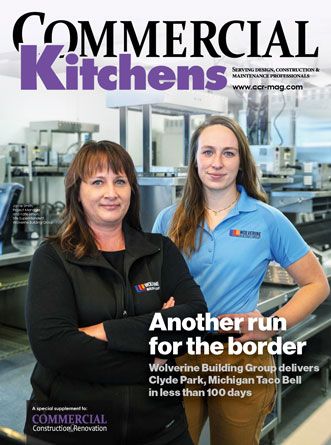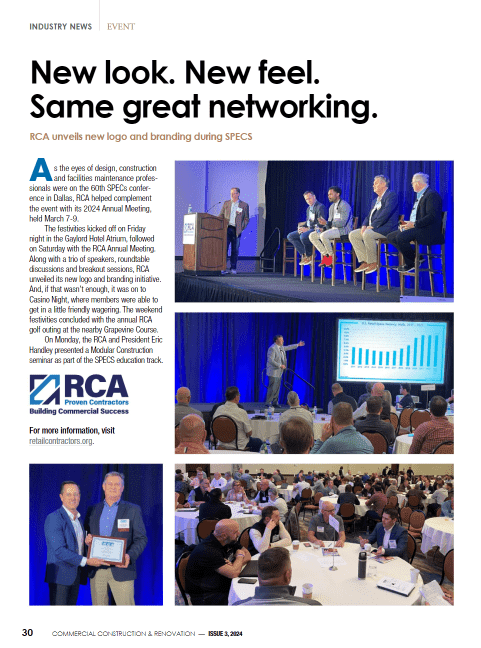Entering 2022, home goods retailers continue to deal with a host of challenges carrying over from 2021, including driver shortages, logistical changes due to a fluctuating pandemic environment, and asset management hurdles that continue to impact organizational bottom lines.
However, leading fleets are realizing that they can recruit and retain more drivers by building a culture that acknowledges safety and driver input while leveraging a more aggressive trade cycle driven by flexibility in operations and finance. This has been helping companies reduce overall costs while adhering to a long-term strategic asset management plan that helps organizations specify trucks with advanced safety features in mind.
Overcoming Driver Shortages
Driver shortages are among the most challenging issues for the industry. Home goods retailers will most likely continue to experience a shortage of professional drivers with the underlying causes showing no signs of stopping in the coming year. The American Trucking Association believes it needs 80,000 more drivers. This number may even swell to surpass 160,000 drivers by 20301. High demand, a lack of new drivers and retiring older drivers continue to play into the issue.
Driver shortage and the retention of drivers were listed as the top two issues being faced by transportation firms according to the American Transportation Research Institute’s (ATRI) 2021 report2. Including drivers in the conversation around safety initiatives and acknowledging their input is important for retention strategies. As more fleets and organizations replace aging trucks with newer, safer equipment on the roads, they will keep drivers and others on the road safer, retain drivers at a higher rate and also enjoy substantial savings in reduced accident and litigation costs as well as lower maintenance and repair expenditures.
Another reason for the driver shortage has been the average age of drivers, which has been climbing for many years now. It is harder to attract younger drivers to the profession, which reinforces the need to build a fleet replenishment plan around shorter trade cycles whereby trucks are increasingly spec’d for newer, advanced safety features that keep drivers safe while returning them home to their families more frequently.
The DRIVE Safe Act, part of the $1.2 trillion infrastructure bill President Joe Biden recently signed into law, should help pave the way for drivers under 21 years old to enter interstate trucking. It requires transportation organizations to utilize industry-leading technology including active braking collision mitigation systems, forward-facing event recording cameras, speed limiters set at 65 mph or less and automated manual transmissions. These requirements further illustrate the need to spec for newer trucks.
Progressive-minded organizations continuously include their drivers in specification conversations and even poll drivers for input during the process, so they feel like their voice is heard. By creating this type of culture, fleets will be more successful in retaining younger drivers.
A Stronger Focus on Sustainability
In addition to safety features, younger drivers have placed an emphasis on driving trucks that are more sustainable and environmentally conscious. This movement reflects the broader population’s desires to pay closer attention to climate change, which is a leading reason why fleets are now implementing environmental, social and governance (ESG) goals while promoting sustainability through shortening asset life cycles and optimizing vehicle specification to be more fuel-efficient. These organizations are specifying lighter components that allow for longer maintenance intervals, which reduce environmental hazmat waste disposal. Companies are also supporting their social criteria by operating the newest and safest trucks which help to further attract and retain a greater pool of diverse drivers and other staff.
Keeping Residuals in Mind During Spec’ing
While this new focus on ESG is now a major business strategy, paying close attention to the bottom line is still a significant need for many organizations, which is why they are not only spec’ing for safety but also spec’ing with residuals in mind. Fleets that operate a life cycle asset strategy of between 3-5 years to lower their Total Cost of Ownership (TCO) need to spec trucks in a way that allows them to enhance each truck’s residual value. For example, spec’ing trucks with features such as manual transmissions, 6X2 configurations and a lack of engine brakes will be detrimental to the residual value with a short trade cycle.
Remaining Focused on the Long-Term Strategy
For other haulers and their fleets, staying true to their long-term asset management philosophy is important, especially today when the supply challenges can compromise long-term decision-making. Fleets that have leveraged the power of data analytics for asset management and procurement, along with flexible lease solutions should continue to maintain this strategy with only minor course corrections as the industry continues to navigate additional procurement challenges. Utilizing finance options such as Sale-Leaseback and temporary lease extensions can satisfy short-term needs without damaging long-term procurement goals due to build slot limitations.
As an example, a Sale-Leaseback can provide a substantial operating cost reduction, where the savings can be used for driver bonuses or increased salaries. However, the most important action item is to build an 18- to 36-month roadmap for equipment replacement and proceed with a truck order.
Finding the right strategic partner with common philosophies and access to critical OEM and financial relationships is key in both navigating short-term challenges and in achieving long-term success. Some consultants in the industry today are using fear to pressure fleets to pivot their asset management strategies, but fleets should stay the course and rely on proven data analytics-driven philosophies for their life cycle asset management.
Fleets that maintain planning discipline through what has been confirmed by data analytics will continue to lead the industry, especially since the laws of science and economics will not be compromised because of current supply chain disruptions.
About The Author: Al Barner, CTP, is Senior Vice President, Business Development at Fleet Advantage, a leading innovator in truck fleet business analytics, equipment financing and lifecycle cost management. For more information visit www.FleetAdvantage.com.
1: https://www.ttnews.com/articles/truck-driver-shortage-looms-over-2022
2: American Transportation Research Institute (ATRI); Critical Issues in the Trucking Industry – 2021







 The 2024 virtual Men’s Round Table will be held Q4, 2024, date TBD.
The 2024 virtual Men’s Round Table will be held Q4, 2024, date TBD.











